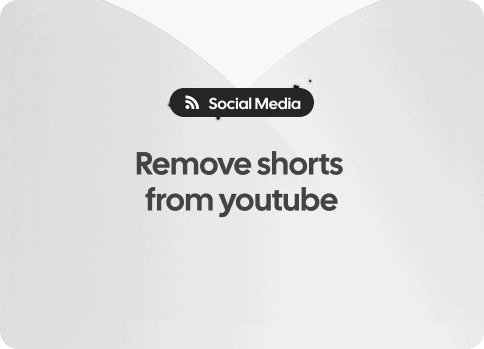YouTube Shorts has become a prominent feature since its inception, allowing creators to engage with their audience through short, snappy videos. However, not everyone finds these shorts beneficial or enjoyable. Whether it’s to enhance their viewing experience or simply because they prefer longer content, some users seek ways to eliminate or hide these brief clips from their YouTube feeds. This article explores various methods and strategies for managing and removing Shorts from your YouTube interface.
An overview of YouTube Shorts and user preferences
The YouTube Shorts feature was introduced as an answer to the rising popularity of short-form video on platforms like TikTok. Positioned prominently on the YouTube homepage and the mobile app, Shorts aim to captivate users with content that lasts up to 60 seconds, often showcased in a vertical format to suit mobile viewing. While many appreciate the quick, engaging nature of these shorts, others might find them distracting or irrelevant, especially if they’re seeking more substantial, long-form content.
Understanding the impact of Shorts on viewer’s feed
Shorts are not just isolated moments; they are integrated into the general feed, appearing alongside traditional long videos. This integration means that the usual video landscape on YouTube is punctuated by these squares of spontaneous, bite-sized content which can alter the appearance and dynamics of the viewing experience. For users focused on specific topics or preferring lengthy videos, the prevalence of Shorts can disrupt their informational or entertainment journeys on the platform.
Adjusting settings to minimize Shorts visibility
To deal with unwanted shorts, YouTube provides no direct “remove” button. However, several adjustments can be made to ensure these videos are less intrusive:
- Modifying the home feed: Although you cannot completely remove Shorts from YouTube, you can influence their frequency. By not interacting with Shorts (i.e., not clicking, liking, or commenting), and instead engaging more with regular videos, YouTube’s algorithm learns your preference and gradually adapts your feed accordingly.
- Using content filters: On desktop versions, though there is no specific toggle switch to turn off Shorts, users can visually skip past them or use browser extensions designed to filter out certain types of content, including Shorts.
Custom solutions and third-party apps
For those who want a more drastic reduction of Shorts from their YouTube experience, third-party browser extensions offer a viable solution. Extensions such as “Remove YouTube Shorts” and “Block YouTube Shorts” can be added to browsers like Chrome or Firefox, allowing users to physically prevent Shorts from appearing in their feeds. It’s crucial to note, however, that relying on third-party solutions may involve risks related to security and data privacy, so always opt for reputable developers and read reviews before installation.
Long-term implications of disabling Shorts
Choosing to disable or ignore Shorts might affect the personalized recommendations on your YouTube account. The algorithm tailors content suggestions based on interaction patterns; hence, a significant shift in the type of content you engage with could reshape your entire YouTube browsing experience. Moreover, although reducing the presence of Shorts might align better with your personal preferences for content consumption, this might mean missing out on trending moments and culturally relevant content delivered in short form, which could isolate viewers from broader community engagements.
Feedback to YouTube developers
If the prevalent issue of unwanted Shorts persists and heavily impacts your enjoyment of the platform, providing feedback directly to YouTube can be another course of action. Through the app’s “Send feedback” feature, users can voice out their concerns or requests such as enhancements to the UI that would allow better management of what appears in their feed. User feedback is often a catalyst for change, influencing future updates or the introduction of new features that could include more refined content control tools.
This topic will continue to evolve as YouTube develops and adjusts its features. Stay tuned for updates and newly emerged tools that might provide further assistance in curating a more personalized YouTube viewing experience.







